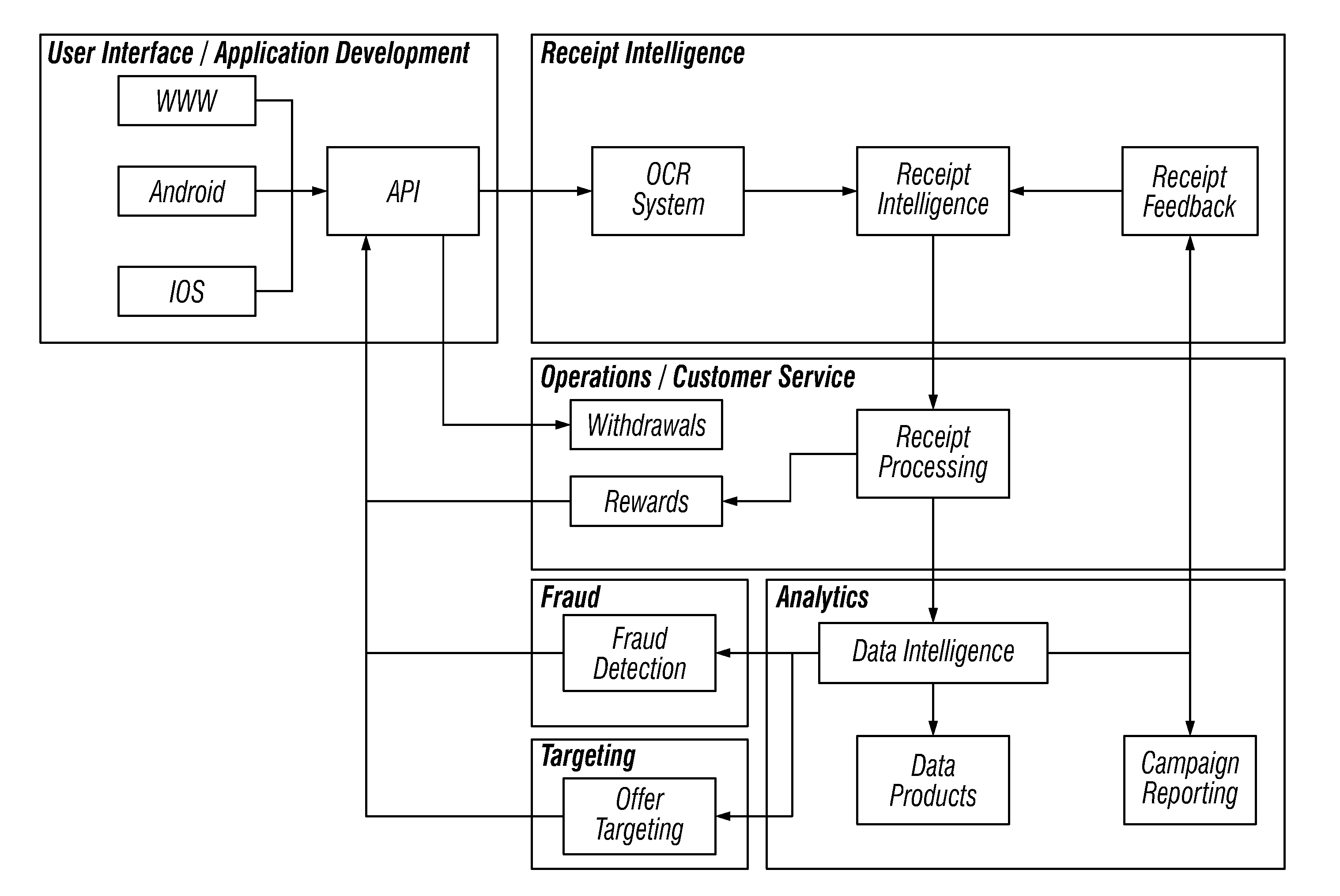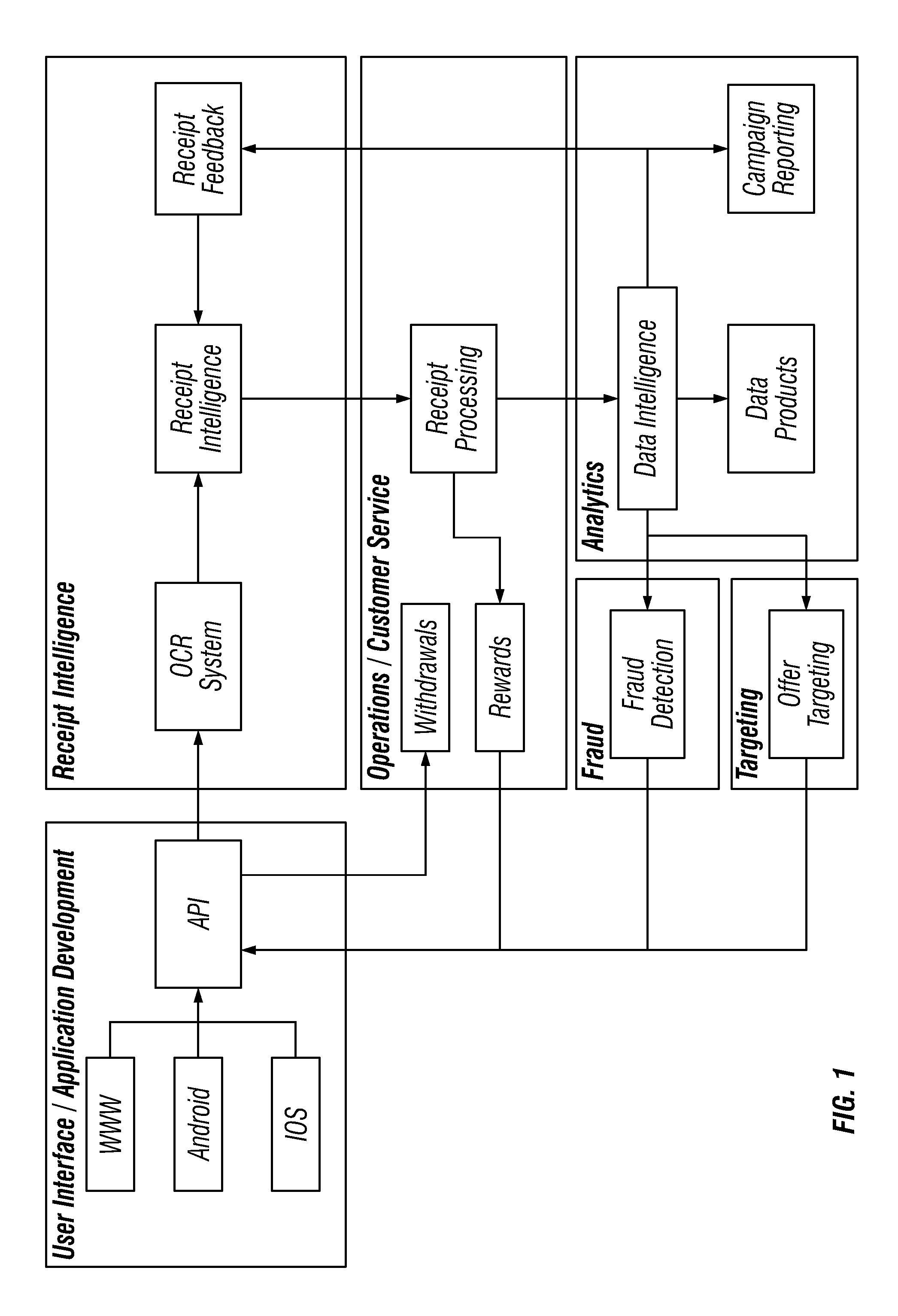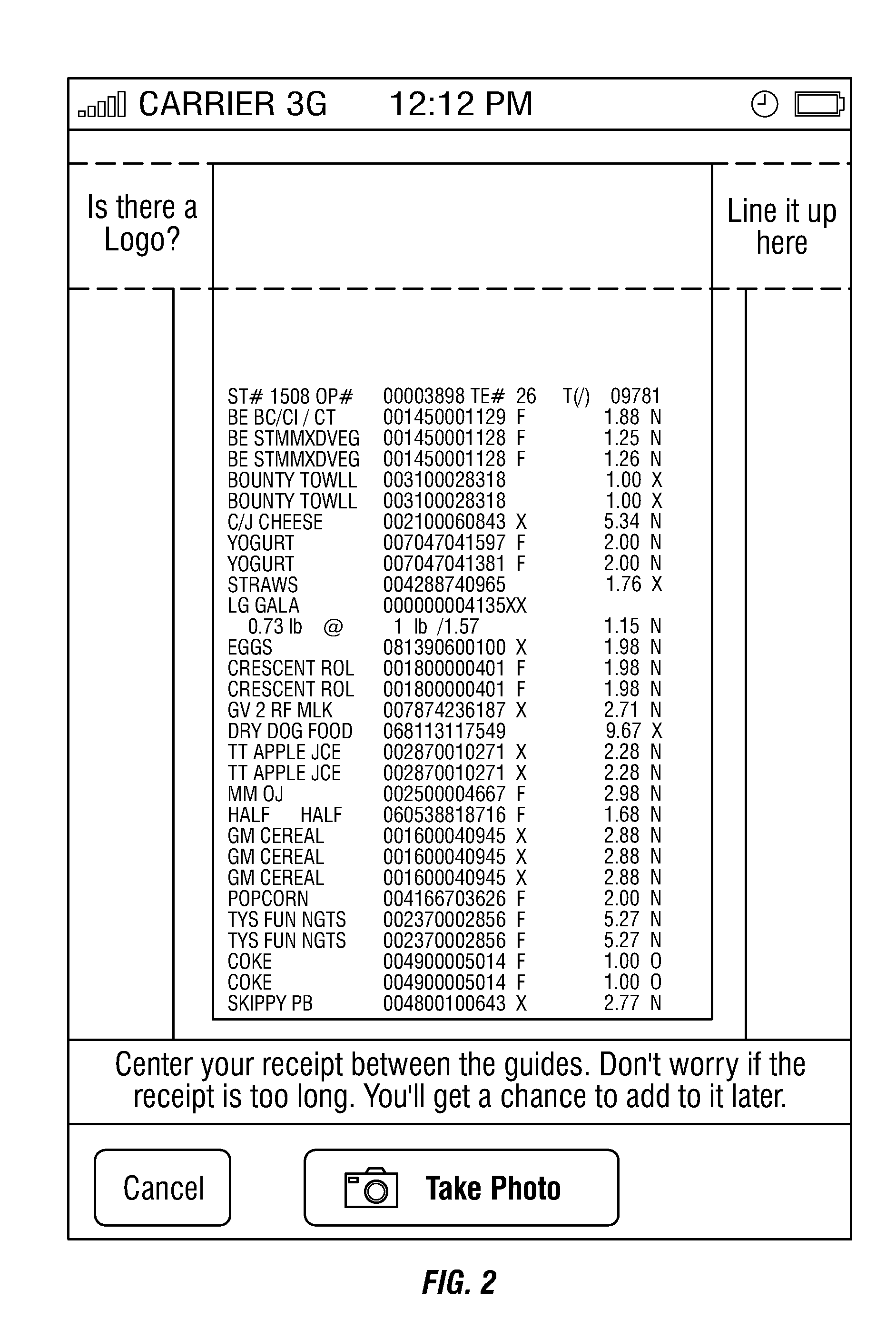Traditional incentive campaign rewards and offers
system campaign offers and rewards systems suffer drawbacks in terms of campaign creation, budgeting, convenience of
tracking data, changing promotions, return on investment, and the like.
For example, for a
consumer who participates in multiple incentive programs it may take time and effort to track his or her participation in each program.
Therefore, when a
consumer receives an offer to participate in an incentive program, the
consumer may decide against participating in it, not because the incentive program is not attractive, but because the cost to the consumer, in terms of the time and effort to tracking another incentive program, exceeds the expected benefit of the incentive program.
A similar problem exists for sponsoring companies who wish to offer promotions.
The collective costs of generating incentive campaign rewards programs, administering the programs, tracking the participation of consumers in the incentive campaign reward programs and fulfilling the rewards or prizes won in such incentive programs may exceed the benefits of offering the incentive campaign rewards program.
These costs may be particularly high in instances where the activities associated with an incentive program must be carried out by different companies, or by different organizations within the same company.
Furthermore, the sponsor of a campaign may find itself rewarding its least economically attractive customers who are deal-driven and not likely to be brand advocates or loyalists in the future.
Existing incentive campaign reward programs do not meet the entire consumer and sponsor needs associated with incentive programs.
The
processing of promotions, i.e., providing the appropriate check or discount coupon to the customer as a reward for the initial purchase, involves high volume and labor intensive activity, including collection,
verification and organization of initial proofs of purchase and related information, preparation of the checks, coupons or other items using preprinted stock provided by the sponsor in connection with the particular promotion, and finally the sorting of individual items based on their mailing destinations.
This increases handling expense, not only in added labor, but also in the mailing cost, as it is difficult with a single promotion to accumulate a volume of items sufficient to qualify for certain reduced postage rates, e.g. the reduced rate available for mail presorted by
zip code of the destination.
Manual recombination and sorting of items for multiple promotions would be prohibitively expensive.
Many problems exist with the traditional coupon distribution and redemption
system.
For example, few consumers will go through all the steps necessary to redeem their coupons, and the consumers who do go to the trouble of redeeming coupons are disproportionately extremely price-sensitive and adept at extracting maximum value from incentive programs, often combining multiple coupons and store coupons to receive products at little to no out of pocket cost, making their redemptions a money-losing proposition for the product's manufacturer and limiting the effectiveness of the overall campaign.
Thus, reluctance by a “typical” consumer to take all necessary steps partially defeats the manufacturer's purpose for offering the purchase incentive.
However, when the coupon is forgotten or disregarded, the consumer is usually not aware of the incentive when he is selecting a product among different brands at the retail store.
A further problem with coupon redemption systems is
verification.
Because the
verification of redemption conditions is performed by a check-out clerk using
point of sale (POS) systems, sometimes the
programming of the POS systems do not properly enforce a campaign's rules.
Thus, the system of Peach et al. reduces some of the paperwork associated with single-promotion systems, but it merely mitigates, rather than solves, the problems inherent in paper-based promotions.
However, existing incentive campaign reward programs do not solve all consumer and sponsor needs.
In particular, such promotional games do not assist consumers in tracking participation in multiple promotions and do not assist sponsors in generating incentive programs, tracking participation in incentive programs and fulfilling rewards and prizes.
The card-based system of Schultz takes
advantage of certain
data processing capabilities of computer systems and certain data storage capabilities of electronic card technologies; however, among other drawbacks, the system of Schultz does not address the need for a system that assists sponsor companies in generating incentive programs, in tracking participation of consumers in multiple incentive programs, or in fulfilling rewards.
Such systems have requirements peculiar to their respective industries, and none of the existing systems address all of the problems inherent in known incentive programs, particularly the problem of the need for an incentive program system that conveniently tracks participation while offering automated generation of incentive campaign reward programs and automated fulfillment of rewards won in incentive programs.
Computer incentive campaign reward programs are offered on
the Internet; however, such systems are generally offered by a single sponsor and are generally limited to offering consumers the ability to participate in incentive programs.
Known campaign offers and rewards systems do not offer sponsors the ability to conveniently generate incentive programs, to track participation of consumers in multiple incentive programs, or to provide for automated fulfillment of rewards.
Another important drawback of known computer incentive campaign rewards program systems is that the obligation to fulfill the rewards promised in a promotional campaign is often a logistically difficult and expensive task.
There are numerous problems with current incentive campaign rewards programs.
The people who receive and redeem offers, such as coupons, may not have the
purchasing characteristics to make the incentive, provided by the offer efficient for the marketer.
There is a great deal of uncertainty in determining the redemption rate of that offer (i.e., coupon), and the associated costs to merchants or product producers, e.g. the campaigner.
Current campaign rewards programs do not provide the campaigner with certainty about how much of a campaign will be redeemed.
Another problem with campaign reward programs and systems is that they do not look at the state of a campaign budget and make a decision as to whether it makes sense to give a proposed recipient the offer.
Yet another problem is that campaign reward programs of today do not have a cross-retailer shopper's purchaser history and the brand offer requirements, e.g. the budget of the campaign.
Still a further problem of campaign reward programs is that there is a lack of control of the redemption mechanism.
 Login to View More
Login to View More  Login to View More
Login to View More 


